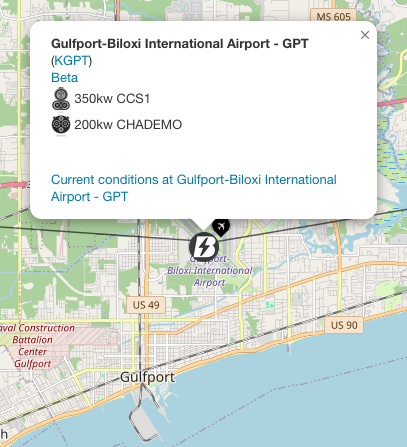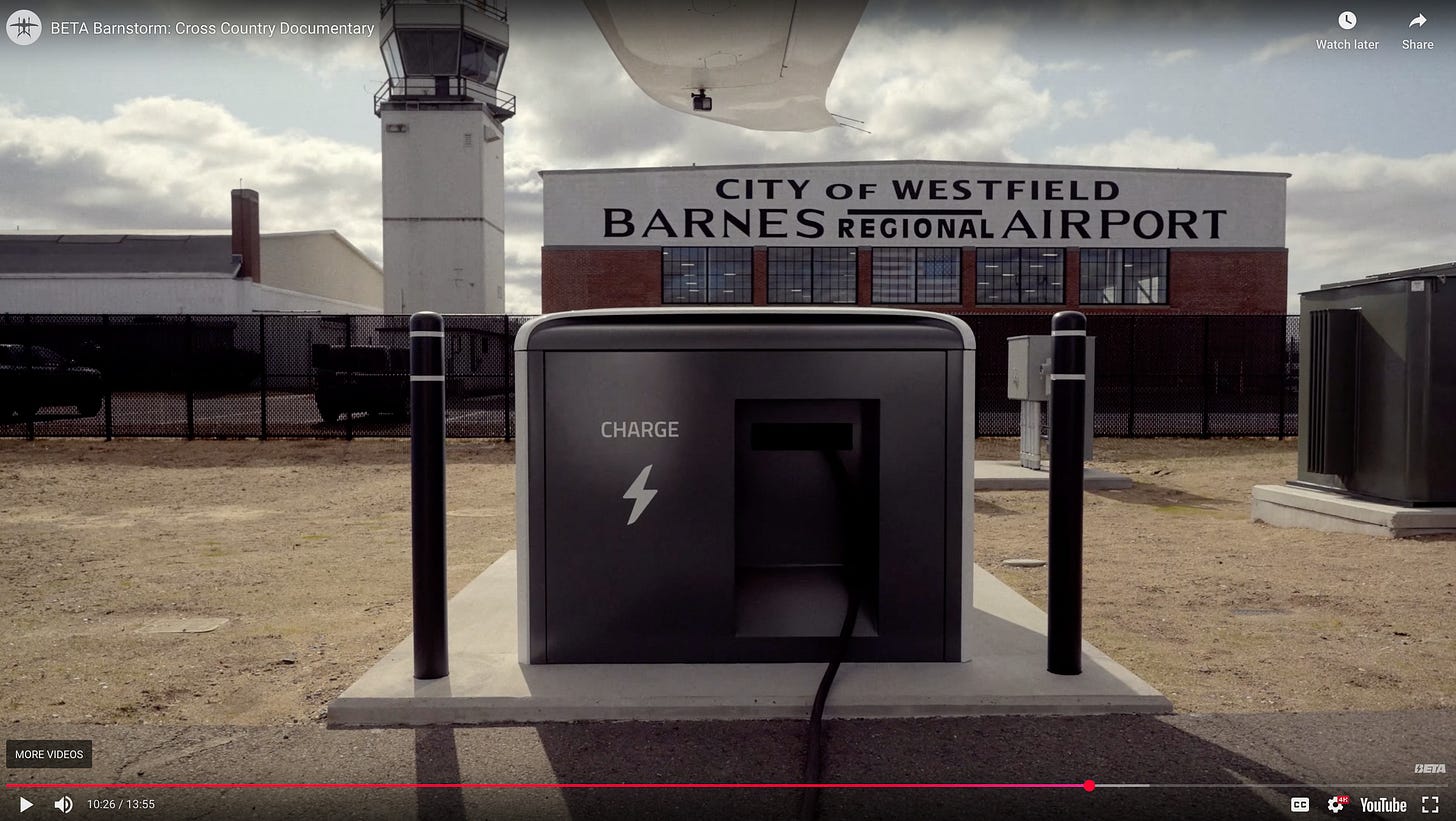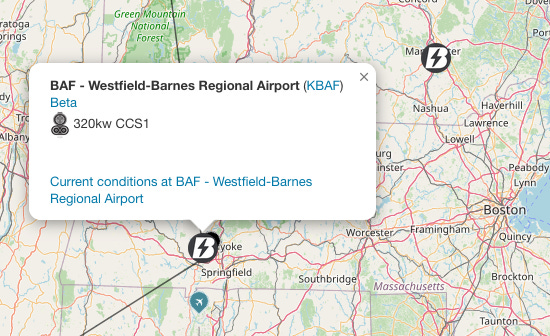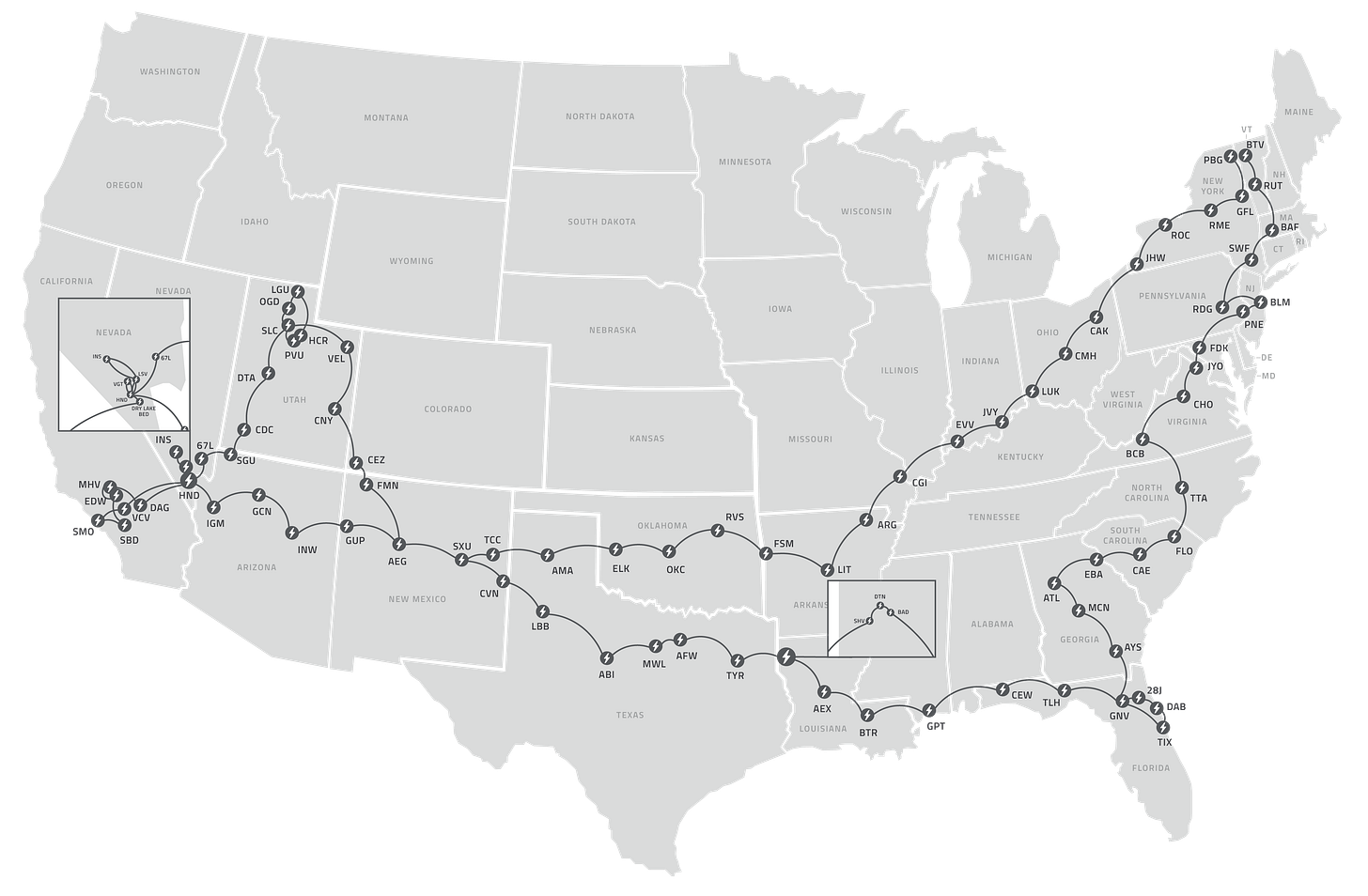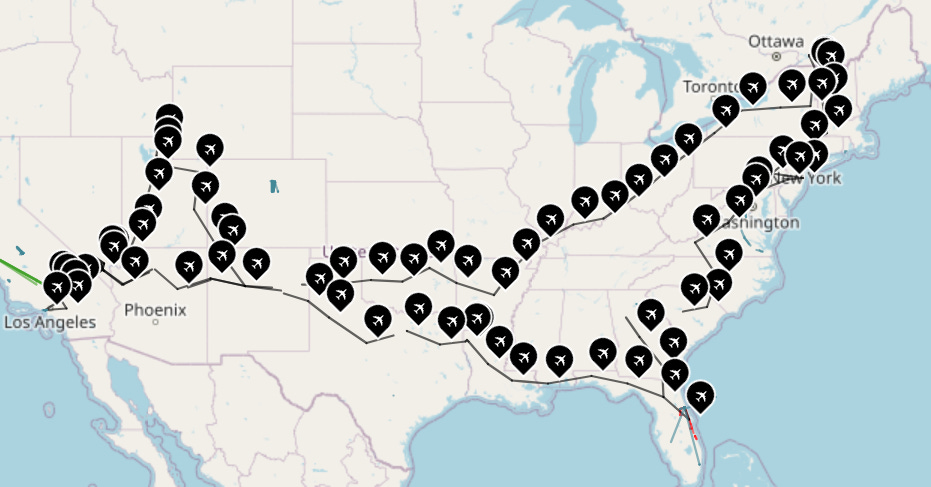The original story was posted right after Beta's Barnstorm flew from Floriday to Utah between March 12th and 19th
They published another video, this time of their visits in Utah. Very exciting to think about the tie in with the Olympics - maybe we'll see Alia flying over the games?
Route details
After Utah, the team flew through Colorado, New Mexico, Texas, Louisiana, Mississippi to Florida. In this stretch they hit quite a few Beta charging stations, which surely sped them along.
🗒️ Fun fact
By AirCharg.ing's estimation, the Beta Alia CX300 in the video above, N916LF, now has over 11,000 kilometers flown and 120+ "engine hours" notched
Looking at this table, I'm struck by how short some of the layovers are. Even after flying ~ 250 kilometers between Biloxi and Bob Sikes in Florida, the layover was only 5 hours before flying another 210km - but this makes sense given that Biloxi has a 350 kw Beta charger. The 15 hour layover in Lubbock likely had something to do with pilot rest time (given they would have landed after midnight), but also could have been partially because of charging, as Lubbock doesn't have a Beta fast charger.
How are they charging at all these airports with no Beta chargers?
Alia charges with the same automotive CCS1 standard that many electric cars in North America use, which should mean that they can also charge the aircraft on the "level 2" J1772 standard. So I'm imagining them packing a spare portable level 2 charger, and possibly even charging on level 1 (120V) from time to time? Or, is someone driving behind them with a Mini Cube in a truck?
🗒️ Charging terms
Level 1: "a regular power socket", the same kind you use to plug in a lamp.
Level 2: a larger electrical socket (e.g. dryer plug), a 240V plug that's rated for heavier duty.
Level 3: more like a gas pump for electric vehicles, a large DC power device with sturdy dedicated electrical service.
I did some quick math on how long it might be taking to charge Alia based on what's available. By my estimation, worst case it'd be ~ 22 hours (and possibly a very long extension cable!) to charge the aircraft even on a regular power socket.
Assumptions:
Nothing "fancy" - not trying to use Ground Power Units (i.e. ISO 6858), not doing three phase
Ground crew would be able to provide at least a regular 20 amp circuit
A portable AC charger (easy for the team to pack in an overnight bag) - something like the Grizzl-E mini would do fine
Flight crew would avoid getting the battery below 30% in order to make sure there's a reserve
The team would want to charge to 100% to maximize range
Here's the numbers from my spreadsheet - and it looks like charging up an Alia wouldn't be unlike charging any regular EV - even without the high speed Beta charger on site, you can be recharged after most runs in less than 5 hours assuming you have access to a high voltage outlet.
UPDATE: Beta posted about the barnstorm recently, including a great new video
https://beta.team/stories/barnstorm
I love the footage. One mild spoiler, there is some rather boisterous language when the team decides to try to land in a dry lake bed - maybe cover kids ears or put on headphones of you’re averse to some swearing.
Most interestingly for me, they a) published a map (so I can compare to what we got from ADSB data) and b) they put a hint out there around how they charged:
“Charged Up
Most of the 25 states we flew through were met by a barebones crew. Often times, an ALIA pilot would touch down at airports across the country with no ground team waiting. In places beyond our ever-expanding charge network, our charge truck would eventually catch up to support the mission in the background.”
from https://beta.team/stories/barnstorm
So, maybe there was a level 2 charger in the back - but it seems like the “charge truck” was an important part of how this worked. Still leaves more questions:
Was this an F-150 Lightning like Lafeyette College student Remy Oktay used in 2022 with his Pipistrel Alpha Electro?
Or a semi with batteries? a generator? Even if it was electricity generated from a diesel genset the whole way, I imagine they would have emitted fewer kg of CO2 than a comparable aircraft - if a generator emits 1.94 kg per kwh,
They did show in the video using Beta’s brand new Charge Cubes, like this one at Westfield Massachusetts.
At a first glance, our maps look pretty similar! I’ll find some time to go through it in detail to fill in the gaps we had in the South West, and double check our data.


